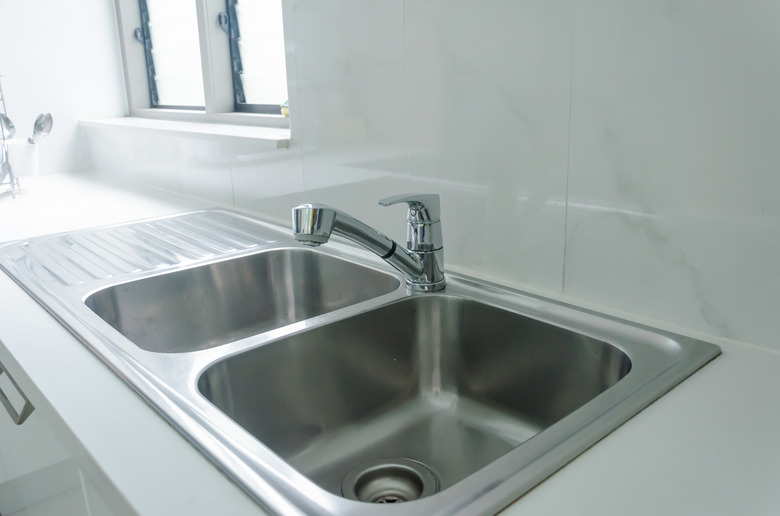How To Remove A Yeast Clog From A Drain
If you're looking for homemade remedies for a clogged drain, you'll probably come across suggestions to use yeast. Pouring a tablespoon of instant yeast down the drain followed by a tablespoon of sugar, it's said, loosens the organic matter constricting the pipes, and unlike conventional caustic drain cleaners, yeast is safe and even beneficial for septic systems. If you've got a spare bottle of beer, you might even be able to clear the clog with a fizzy beer drain cleaner.
But what to do when yeast is causing the clog? The answer is to treat it like any other clog. If it has settled in the P-trap, try to poke through it with a long implement, such as a Zip-It tool. If that doesn't work or you've got what's known as a sugar snake in the drain, plunge the sink and use vinegar and baking soda to dislodge it. As a last resort, disassemble the P-trap and clean it manually.
The Yeast Could Be Lodged in the P-Trap
The Yeast Could Be Lodged in the P-Trap
If you have a drain clogged with flour or yeast, it could be glued to hardened grease, soap or starch. There's a chance, however, that the yeast has settled into the bottom of the P-trap and formed a hard mass. You'd have to pour a lot of yeast into the drain at once for that to happen, but perhaps you were baking bread or making beer and did just that.
A Zip-It tool, which is like a cable tie with barbed edges, is long enough to reach into most sink traps and poke a hole through the mass. It's inexpensive and easier to use than a sink auger, and it will fit through a basket strainer. Once you poke a hole, a gallon of boiling water will probably wash most of the mass away.
If you already have a sink auger, go ahead and use that if you can fit it through the strainer.
What to Do About a Sugar Snake in the Drain
What to Do About a Sugar Snake in the Drain
If it's been a long time since you maintained the drain and bacteria have been growing, fed by sugar and – yes – yeast, the blockage can grow into the shape of the pipe. This type of blockage is called a sugar snake, and the best way to handle it is with an enzyme drain cleaner. Ideally, you use an enzyme cleaner to prevent, rather than bust, clogs, but the enzymes can also clear a clogged drain, although it might take a day or two.
Enzyme drain cleaners are available everywhere and easy to use, but be sure to read the instructions on the container before you use a product to make sure you're doing it correctly. Some products come with automatic dispensers for sinks serving soda fountains so that a small amount of the drain cleaner gets added whenever sugary water goes down the drain. Such a product is known as a soda fountain drain cleaner, and it's good to have on hand if you regularly pour sugary stuff in the drain.
Two Common Drain Cleaning Standbys Can Help
Two Common Drain Cleaning Standbys Can Help
Many plumbers recommend plunging as the very first drain cleaning strategy you should try. A plunger, when properly used, forces water against the yeast clog and breaks it up, and once the water starts to flow, you can handle the rest with a vinegar and baking soda volcano. Just be sure to fill the sink and the plunger with water before you plunge so you're not pumping air, which is compressible and probably won't do the job.
Once flow starts, pour in 1/2 cup of baking soda and follow this with a quart or so of a 50/50 solution of vinegar and hot water. Wait about 10 minutes for the foaming to stop, then pour in a gallon of boiling water. It's a rare yeast clog that can withstand this treatment, but if that's what happens, it's time to disassemble the P-trap and clean it.
